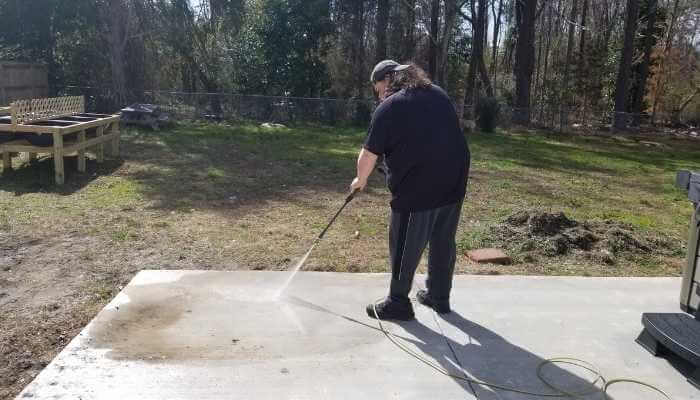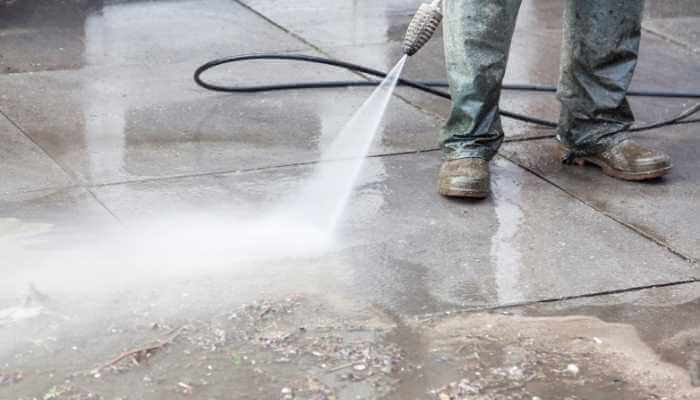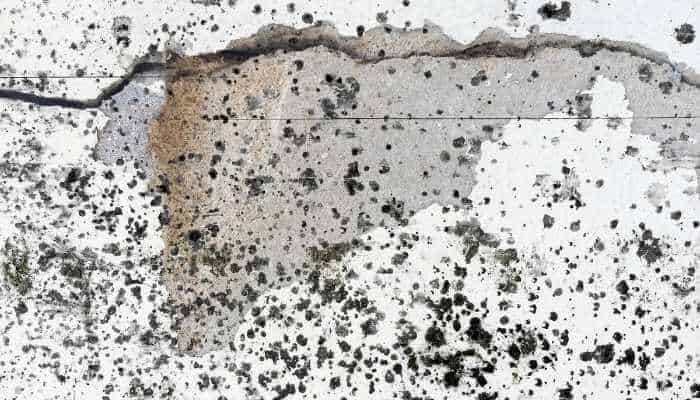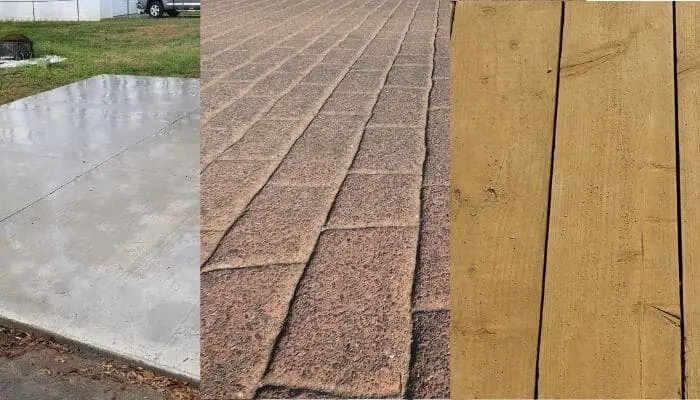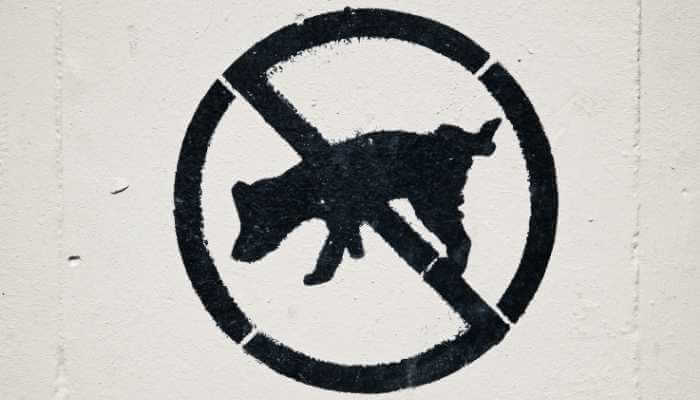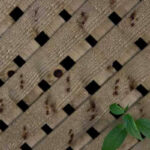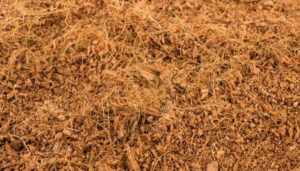Whether you’ve hired someone or you’re actually taking the journey of pouring a concrete patio yourself, choosing the correct sub-base for your project is one of the most important things to do.
The foundation materials for your concrete patio can determine how long it lasts and whether or not you will find cracks in your patio someday. For the best results, pour a sub-base of gravel or crushed stone over a packed, level, vegetation-free, and debris-free soil.
Want to cut corners, save some money and time? That may cost you in the end. Any flaw can in turn damage your final product. The appropriate sub-base is very important when it comes to concrete patio projects of any kind. Still not convinced? Then keep reading.
Can You Pour Concrete Over Grass?
You can, but if you pour your concrete over any vegetation at all, you are opening yourself up to a lot of problems in the future. Ideally, you should pour concrete into a frame on smooth, level soil with no vegetation at all. In other words, remove all of the grass and roots.
If you want your concrete patio to last and not have any cracks, remove all grass and roots from the area. That means you may have to go down a few inches, to keep there from being any regrowth.
The grass may not be strong enough to cause major damage, but we’ve all seen those little dandelions or bushes popping up through concrete in the city. If you leave any roots beneath your patio they can find microscopic cracks, or even damaged areas of your slab and push through to further weaken your concrete patio.
Not to mention, if you pour over grass, you will end up with an uneven and unlevel patio. Concrete pushes down as it dries, and if roots and thick grass are down there, it will cause the top of the concrete to be uneven.
The grass can shift and move over time, causing further chances for cracking when more weight is applied to the top. Think about the blades dying, and leaving a space between the bottom of the concrete and the earth. Part of the concrete slab could sink causing the patio to be unlevel or even crack.
Can You Pour Concrete Patio Over Dirt?
It’s not impossible to pour concrete patio over dirt. But is it a good idea? After all, your dirt is generally the sub-grade, the material tamped down to withstand heavy weight loads. Trying to also use that as your sub-base to provide more stability for the concrete could be problematic.
That’s not to say that if you do things correctly, you couldn’t get the proper results. But you can’t just clear out the grass and other vegetation and put in a frame and pour the concrete. That’s going to lead to improper setting and possible cracking.
Just because you aren’t putting a specific material in for your sub-base, doesn’t mean you can do without one. The dirt you are using now becomes the sub-base. And the thickness of that sub-base depends upon what you are constructing. Not adding more dirt and tamping it down can leave your slab weak and prone to cracks. You definitely don’t want that for a garage or driveway, do you?
The space you want to pour the concrete into has to be framed. Wood planks work and if you place them properly around the dirt that’s to be your base, it should stop the dirt from spreading when the weight of the concrete hits it.
Don’t forget, the climate has a lot to do with how thick you want both your sub-grade and your sub-base packed. When you’re working with dirt, you’ll need to pack that material accordingly. It also needs to be damp, but not super wet. Once you have the dirt you need in your framing, it has to be compacted by a plate compactor. That means renting one.
So, you’re cutting corners by not having to buy gravel or sand, but are you really saving a lot of money or wasting a lot of time?
Now, for little jobs where I’m just mixing cement (not concrete) for a small project in my wheelbarrow? Sure, I will definitely cut these corners. I’ll eyeball it, dig an extra trench for anchoring the cement, and tamp down the dirt to a good sub-grade and I may not even bring in anymore for a sub-base at all.
But these are smaller projects. Stepping stones, for instance. When it comes to larger concrete projects, things that will be holding a lot more weight, things that I want to last – I’ll always go with professional service and get the appropriate sub-base. Not dirt.
Is Sand a Good Sub-base for Concrete Patio?
It has been used and can be used, but there are so many drawbacks to it that I can’t see recommending it by itself at all. In the past, people have said that using sand as a sub-base to concrete helps remove moisture so that the concrete will be set faster. Another source states that because sand can be so easily formed into a level surface, it helps the concrete cure evenly. I find that to be countered by more recent builders’ opinions.
For one thing, getting a level sand surface is very difficult when pouring concrete, as the sand is easy to displace. So maintaining a uniform thickness for your concrete slab is nearly impossible.
That thickness will have to be at least an inch more than you would normally have used for any project.
Another problem with sand is that weather affects it – too wet or too dry, and sand will move. Sand is made up of such small particles that any kind of erosion can leave you with gaps in your sub-base that can of course lead to cracks and sinking.
Some builders say sand isn’t sturdy enough to work well as a sub-base for something like a driveway, because of the need for bearing heavy loads, you need something that is reliable. That if you use anything over 4 inches the compression won’t even work.
On the flip side, sand is often mixed with gravel to create a sub-base, especially in yards where there is a lot of hard clay and a back-fill is necessary before the concrete can be poured. The sand helps the gravel shift into place and once it’s tamped down the mixture is actually very sturdy. That is the only way I would ever use it as part of the sub-base.
Do I Need Gravel Under My Concrete Slab?
Gravel is a reliable sub-base for any concrete project. Why? Because it is the most likely sub-base to keep the concrete from shifting or cracking. Gravel also protects concrete from the most obvious issue – eroding beneath the slab.
As you might have surmised, concrete is a very porous material. Gravel forms what is called a “capillary break” which prevents water from wicking upward to erode the concrete.
The sub-base and sometimes vapor barriers used over that are supposed to pull moisture away from the bottom of the concrete and disperse it. Gravel or crushed stone (almost the same thing, really) is an excellent material for this.
Gravel can be particularly important to use when your soil sub-grade is clay. Clay doesn’t drain well and that extra water can erode and pool under your slab. Putting gravel over clay and using a moisture barrier can save you a lot of future expenses.
Also, a layer of gravel can help eliminate any possible left-over plant root system that could push upward into the concrete or round it. If the gravel is the right size, it will level out perfectly for the pouring of the concrete and will be heavy enough to stay in place.
A layer of crushed stone or gravel as the sub-base greatly reduces the chance of cracking in the finished concrete slab.
What is the Best Sub-base for a Concrete Patio Project?
Gravel is the best sub-base for any concrete project. However, when you’re planning a concrete project, remember that the sub-base isn’t the only layer to think about.
Your sub-grade is the native soil you’re working with. Your sub-base is the material you layer on top of the sub-grade that keeps the concrete even and ideally provides some sort of capillary break to keep water from the concrete. Sometimes there’s a base on top of all of this and a vapor barrier as well – depending on how large the project is.
The subgrade should be uniform so as to avoid crack development in the slab due to bending. Sometimes, the sub-grade has to be mixed with other materials to make it more compatible and less likely to hold onto water.
Now, the sub-base is our star. In my opinion, it should be a layer of gravel. As the thickness of the sub-base increases, the ultimate load-carrying capacity of the slab increases. This is where the math comes in for measuring how much gravel you’ll need.
If you plan on making a concrete slab for a driveway that has to be strong enough to hold cars, your sub-base has to be 10-12 inches thick. A sidewalk sub-base can be 6-8 inches. A patio slab sub-base can be 4 to 6 inches thick so it can support a variety of outdoor furniture. So you see, the differences?
Compacting the sub-base depends on the size of the project. But the sub-grade should definitely be compacted. People rent vibratory plate compactors or rammers to be sure both of the layers are as compacted and level as possible. Then a base can be placed (or not) and a vapor barrier (also optional and depending on the project) right below the poured concrete.
Voila! If all of the steps are done appropriately, and you use gravel as your sub-base – your concrete should be sturdy, even, and last for years.
For any of you DIY adventurers, there is a great article on Bob Vila’s website that gives you step-by-step instructions and can be found here.

